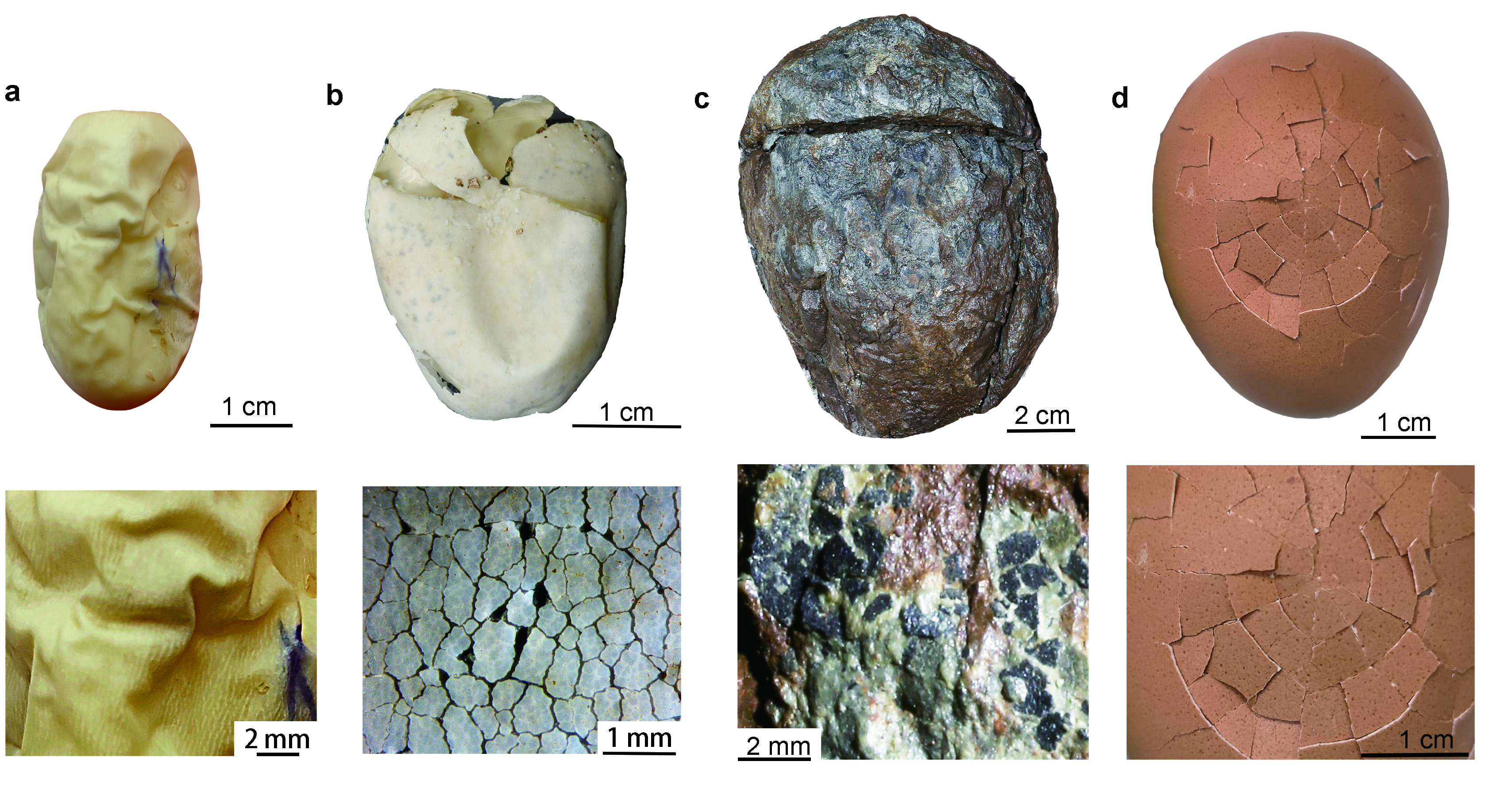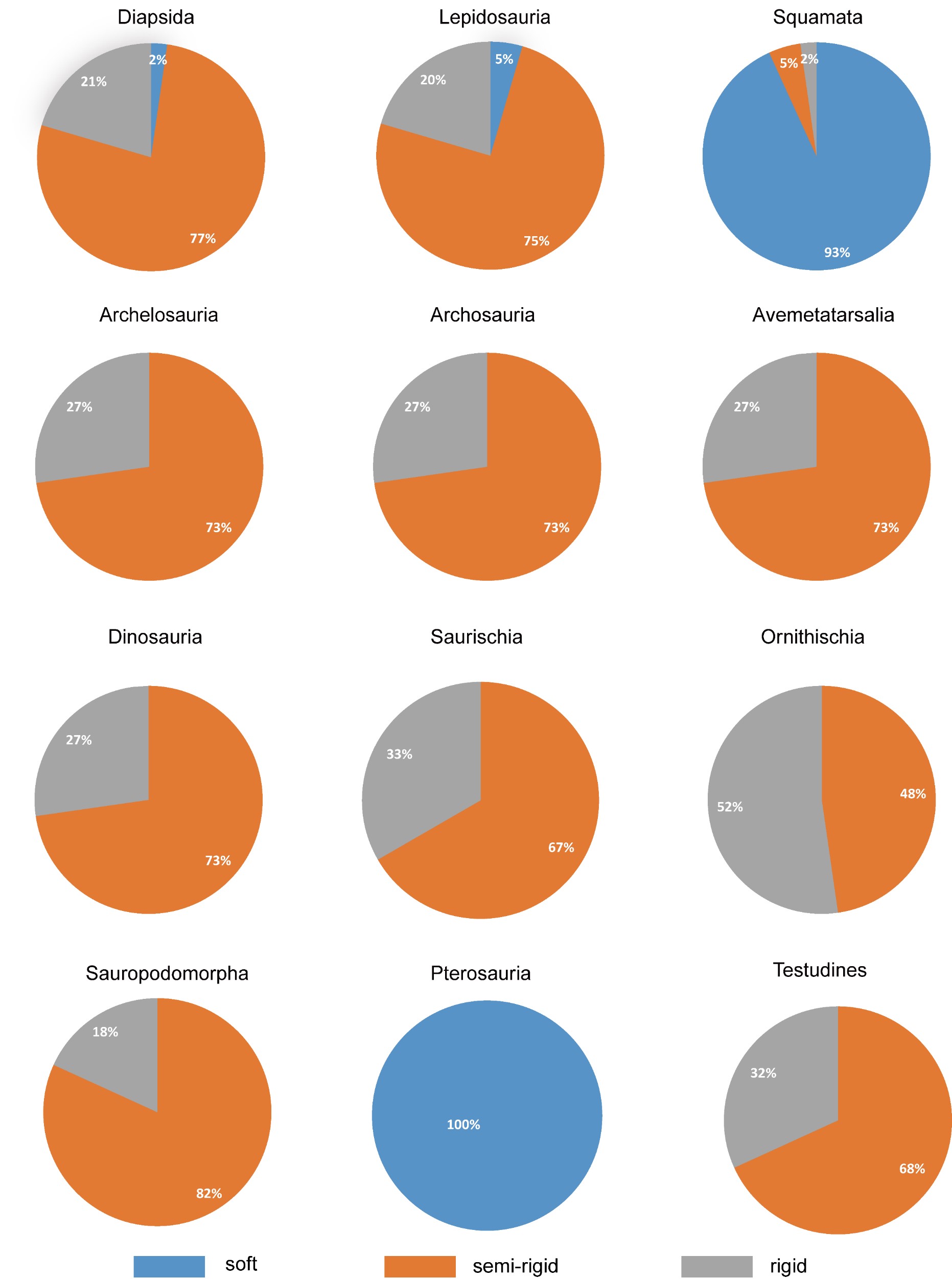The discovery of several exceptionally preserved reproduction-related dinosaur specimens over the last three decades has improved our knowledge of dinosaur reproductive biology. Nevertheless, due to limited fossil evidence and a lack of quantitative analysis on a broad phylogenetic scale, much about dinosaur reproduction remained unclear, especially pre-Cretaceous evolutionary history.
Now, however, a recent fossil discovery by researchers from the Institute of Vertebrate Paleontology and Paleoanthropology (IVPP) of the Chinese Academy of Sciences (CAS), as well as associated analyses, suggests that the first dinosaur egg was leathery, and the major transition in egg morphology occurred early in the evolution of theropod dinosaurs rather than near the origin of birds.
The study, which was published in National Science Review on Oct. 5, reports the discovery of specimens of a new early Jurassic early-diverged sauropodomorph dinosaur species in Guizhou, China- Qianlong shouhu-comprising three skeletons from adult individuals and five egg clutches. This discovery may represent the earliest fossil record of the association between adult dinosaurs and nests, and the species name reflects this association: Qianlong means "Guizhou dragon," while shouhu means "guarding"-a reference to the preservation of adult skeletal fossils in association with embryo-containing egg fossils.
Qianlong was a medium-sized basal sauropodomorph dinosaur that weighed one ton and was about six meters long. The embryos display some differences from the adults, e.g., a proportionally longer skull, a more vertical anterior margin of the snout, and fewer teeth.
Allometric analyses of limb ratios between the adult and embryonic specimens indicate that adult Qianlong was able to walk on its hindlimbs, but the babies were likely quadrupedal. The general taphonomical and sedimentary features indicate that Qianlong might have practiced colonial nesting as a reproductive behavior, similar to other basal sauropodomorphs including Massospondylus and Mussaurus.
The researchers also examined the eggshell microstructure of Qianlong using multiple techniques, including histological thin-sectioning, electron backscatter diffraction, energy-dispersive spectroscopy, and scanning electron microscopy. The results showed that Qianlong possessed eggshell microstructures similar to other Cretaceous dinosaur egg fossils, which likely consisted of two layers-the mammillary layer and continuous layer-and had fully developed eggshell units. The calcareous layer of Qianlong eggs was much thicker than that of most soft-shelled eggs but thinner than that of hard-shelled eggs. The comparison of eggshell fragmentation among different eggshell types also suggests that the eggshell surface of Qianlong featured small fragments, similar to a leathery eggshell, in contrast with the folded surface of soft-shelled eggs or the large-fragmented surface of hard-shelled eggs. These observations indicate that Qianlong laid leathery eggs.
In order to test the macroevolutionary patterns of selected reproductive traits across the dinosaur-bird transition, the researchers assembled data from 210 fossil and extant species representing all major reptilian clades and tested evolutionary trends using multiple time-scaled phylogenies.
They found that relative egg size decreased from the base of the Diapsida to that of the Saurischia but displayed an increasing trend from early theropods to the crown bird node. The most significant egg-size increase occurred early in theropod evolution. In terms of eggshell thickness, they discovered that thickness tended to decrease from the base of the archosaur to the base of the Saurischia, followed by a significant increase in eggshell thickness early in theropod evolution. An increasing trend in eggshell thickness also occurred in sauropodomorph evolution.
Egg shape was generally conserved in the evolution of diapsids to living birds. For example, although theropod egg elongation reached its peak in oviraptorosaurs-with the greatest egg elongation among diapsids-it would later return to its ancestral state. As a result, only slightly elongated eggs were inherited by all crown bird clades.
All in all, reconstruction of the ancestral state of various eggshell types supports the conclusion that the first dinosaur egg was probably leathery, relatively small, and elliptical. Furthermore, a leathery eggshell was probably the ancestral state of Avemetatarsalia, Archosauria and Testudines.

Fig. 1 Reconstruction of egg nests containing fossilized embryos (Image by NICE Vistudio)

Fig. 2 Skeletal reconstructions of adult and juvenile Qianlong (Image by IVPP)

Fig. 3 Comparison of fossil eggs (c) with existing soft-shelled, leathery, and hard-shelled eggs (Image by IVPP)

Fig. 4 Summary of ancestral eggshell type for major nodes with the maximum posterior probabilities in all ASR analyses (Image by IVPP)






